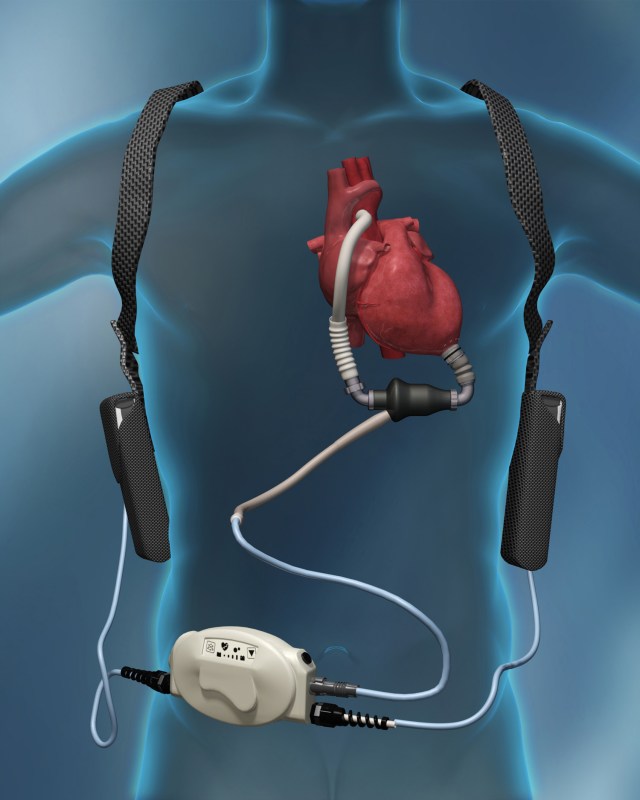
The HeartMate II provides up to 10 years of circulatory support for advanced heart failure patients.
Device extends support for heart failure patients
The Vanderbilt Heart transplant program has a new weapon in its arsenal that provides a longer level of ventricular support for patients with failing hearts.
Approved by the Food and Drug Administration (FDA) last April, the HeartMate II left ventricular assist system (LVAS) can support patients for years and can be used as a bridge to transplantation.
The device is a high-speed axial flow rotary blood pump. It drains blood continuously from the left ventricle to the aorta by the action of the internal rotor, leading to improved long-term performance. The elimination of the blood-pumping chamber and internal valves in this continuous flow device means it is significantly smaller than other currently approved devices.
“It is suitable for a wider range of patients, including small adults and some children, who may not have had long-term mechanical support options in the past,” said Steven Hoff, M.D., assistant professor of Cardiac Surgery. “Its small size and quiet operation increase patient comfort and quality of life, as well as expedite surgical implantation and minimize infection.”
More than 1,300 patients worldwide have been implanted with the device. The HeartMate II Pivotal Study shows immediate improvement in hemodynamics, with an improved cardiac index the day after being implanted compared to baseline, as well as a reduction in pulmonary capillary wedge pressure over that same time period.
When compared with an earlier version of the device, patients had reduction in post-operative bleeding requiring surgery, percutaneous lead infection, stroke and non-stroke neurologic problems.
“Patients in the study experienced an increase in their six-minute walk distance at three months and significant improvement in quality of life,” Hoff said.
The current FDA approval for HeartMate II is limited to use as a bridge to transplantation, essentially keeping a patient's heart beating while he awaits a donor heart. Follow-up data is expected this year that may help to determine whether this device can be used as an alternative to transplantation, or destination therapy, for patients who do not wish to undergo transplantation or who do not qualify for it.













